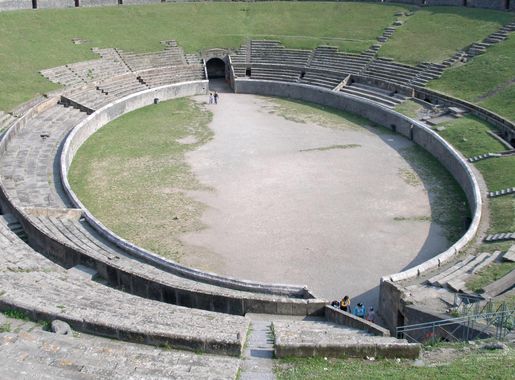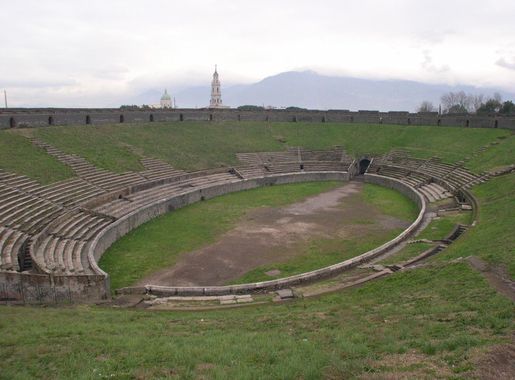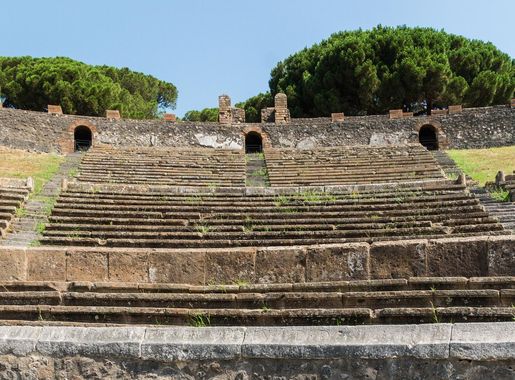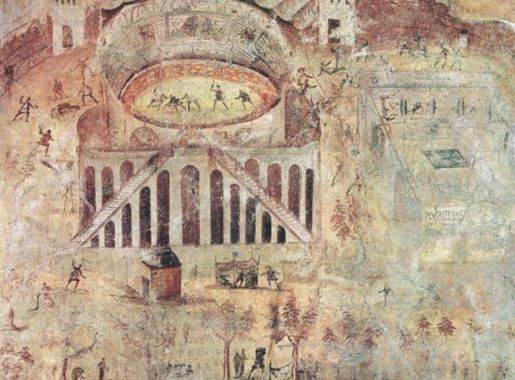
Exploring the Historic Amphitheatre of Pompeii
Discover the Amphitheatre of Pompeii, the oldest surviving Roman amphitheatre, and step back in time to explore the thrilling world of ancient gladiatorial combats.
Nestled in the ancient city of Pompeii, the Amphitheatre of Pompeii stands as a remarkable testament to the grandeur of Roman architecture and culture. Built in 70 BC, it is the oldest surviving Roman amphitheatre and offers a window into the world of gladiatorial combat and public spectacles that captivated Roman citizens. As you walk through this ancient arena, imagine the roar of the crowd and the fierce battles that once took place within its stone walls. The Amphitheatre is not just a relic of the past, but a vivid reminder of Pompeii's vibrant history, tragically frozen in time by the eruption of Mount Vesuvius in AD 79. The sheer scale of the Amphitheatre is awe-inspiring, with a capacity to hold over 20,000 spectators. Wander through its well-preserved corridors and seating areas, and you can almost feel the echoes of ancient voices and the thrill of the games. Beyond the Amphitheatre, the surrounding area of Pompeii is rich with archaeological treasures. Take your time to explore the nearby ruins of homes, markets, and bathhouses that paint a comprehensive picture of daily life in this once bustling city. The Amphitheatre of Pompeii, with its historical significance and architectural brilliance, is a must-visit for anyone eager to delve into the ancient world.
Local tips in Amphitheatre of Pompeii
- Visit early in the morning or late in the afternoon to avoid the peak tourist hours and enjoy a more peaceful experience.
- Wear comfortable walking shoes as the terrain can be uneven and there is a lot to explore.
- Bring a bottle of water and a hat, especially during summer, as there is limited shade in the Amphitheatre.
- Consider hiring a local guide to gain deeper insights into the history and significance of the Amphitheatre and the surrounding ruins.
- Check the weather forecast before visiting, as the site is mostly outdoors and can be affected by adverse weather conditions.
Exploring the Historic Amphitheatre of Pompeii
Nestled in the ancient city of Pompeii, the Amphitheatre of Pompeii stands as a remarkable testament to the grandeur of Roman architecture and culture. Built in 70 BC, it is the oldest surviving Roman amphitheatre and offers a window into the world of gladiatorial combat and public spectacles that captivated Roman citizens. As you walk through this ancient arena, imagine the roar of the crowd and the fierce battles that once took place within its stone walls. The Amphitheatre is not just a relic of the past, but a vivid reminder of Pompeii's vibrant history, tragically frozen in time by the eruption of Mount Vesuvius in AD 79. The sheer scale of the Amphitheatre is awe-inspiring, with a capacity to hold over 20,000 spectators. Wander through its well-preserved corridors and seating areas, and you can almost feel the echoes of ancient voices and the thrill of the games. Beyond the Amphitheatre, the surrounding area of Pompeii is rich with archaeological treasures. Take your time to explore the nearby ruins of homes, markets, and bathhouses that paint a comprehensive picture of daily life in this once bustling city. The Amphitheatre of Pompeii, with its historical significance and architectural brilliance, is a must-visit for anyone eager to delve into the ancient world.
Iconic landmarks you can’t miss
Archaeological Park of Pompeii
Explore the haunting beauty of the Archaeological Park of Pompeii, where ancient history meets modern curiosity amid well-preserved ruins.
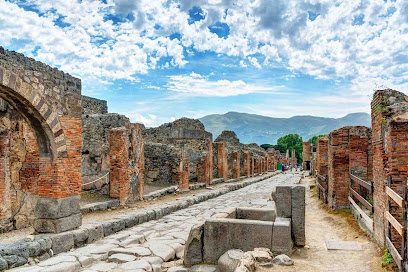
Pompeii Archaeological Park
Discover the ancient ruins of Pompeii Archaeological Park, a UNESCO World Heritage site, where history comes alive amidst the remnants of a Roman city.
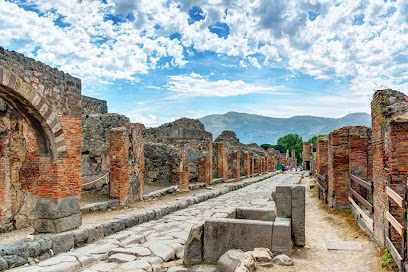
Amphitheatre of Pompeii
Explore the Amphitheatre of Pompeii, an ancient marvel where history and culture converge, showcasing the grandeur of Roman entertainment.
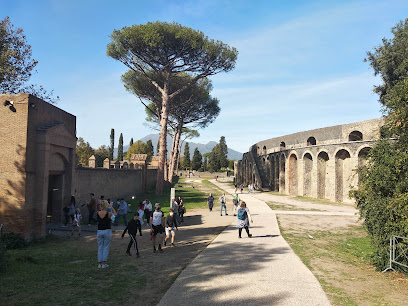
Scavi di Pompei
Explore the ancient ruins of Scavi di Pompei, a UNESCO World Heritage Site, and walk through history frozen in time by the eruption of Mount Vesuvius.
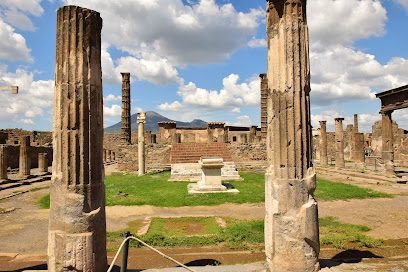
Foro di Pompei
Discover the enchanting ruins of Foro di Pompei, a UNESCO World Heritage site that showcases the vibrant life of ancient Roman civilization.
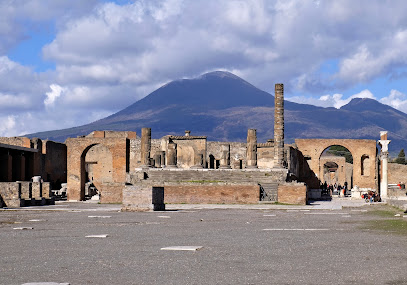
Pompeii (UNESCO)
Explore the ancient ruins of Pompeii, a UNESCO World Heritage Site, and immerse yourself in the history of a city frozen in time.
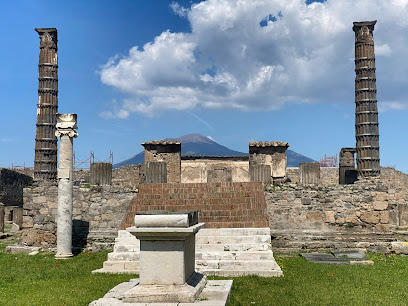
Teatro Grande
Uncover the historical richness of Teatro Grande in Pompeii, an iconic Roman theater steeped in ancient culture and architectural beauty.
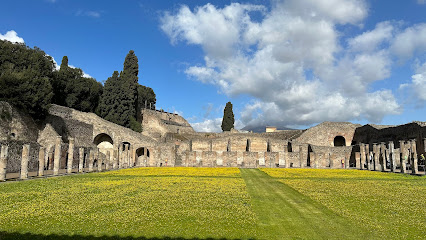
Scavi di Pompei (ingresso Piazza Immacolata)
Explore the hauntingly beautiful ruins of Pompeii, a UNESCO World Heritage site, where ancient Roman life is preserved in stunning detail.
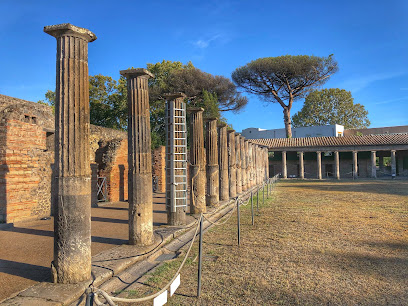
Pompeii Ruins
Unveil the ancient secrets of Pompeii Ruins, a UNESCO World Heritage site reflecting the grandeur of Roman civilization and its tragic fate.
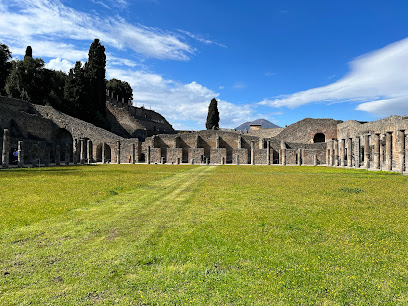
Temple of Venus
Explore the Temple of Venus in Pompeii, where history and beauty converge in a stunning Roman monument dedicated to love.
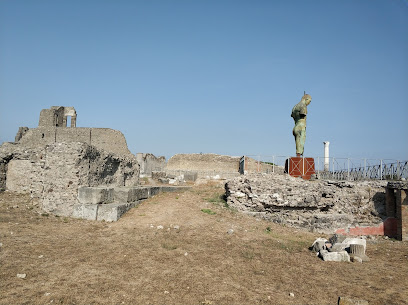
Forum Baths
Explore the historic Forum Baths in Pompeii, a stunning monument reflecting the grandeur of ancient Roman bathing culture and social life.
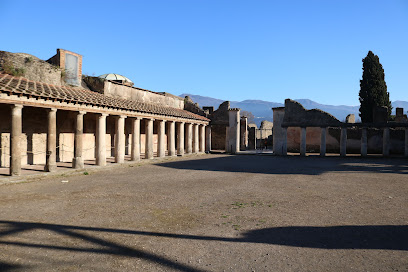
Casa della Caccia Antica
Explore the stunning Casa della Caccia Antica, an ancient Roman monument in Pompei, rich in history and exquisite artistry, perfect for cultural enthusiasts.
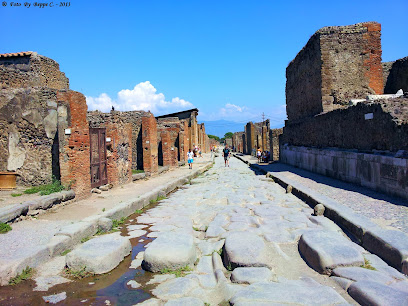
Unmissable attractions to see
Archaeological Park of Pompeii
Discover the ancient city of Pompeii, a UNESCO World Heritage site, rich with history, stunning ruins, and captivating stories frozen in time.

Amphitheatre of Pompeii
Discover the grandeur of the Amphitheatre of Pompeii, an ancient marvel that reveals the vibrant history of Roman entertainment and architecture.
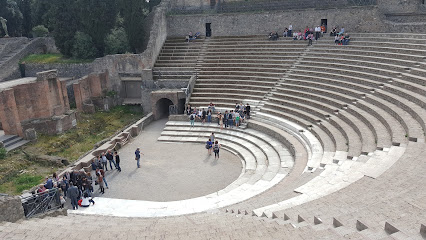
Scavi di Pompei
Discover the ancient wonders of Pompeii, an archaeological marvel where history is preserved, and the ruins of a Roman city await your exploration.
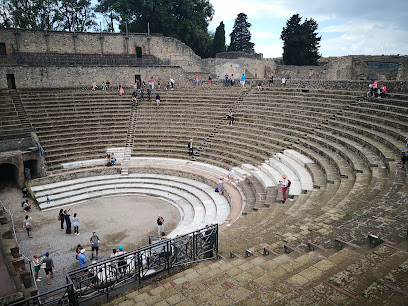
Teatro Grande
Discover the ancient Roman marvel of Teatro Grande in Pompeii, where history and culture come to life amid stunning archaeological remains.
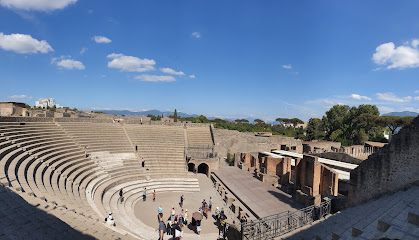
Villa dei Misteri
Explore the Villa dei Misteri in Pompeii, a breathtaking archaeological site featuring exquisite frescoes and a glimpse into ancient Roman life.

Scavi di Pompei (ingresso Piazza Immacolata)
Explore the fascinating ruins of Pompeii at the Scavi di Pompei, where ancient history comes to life amidst preserved structures and captivating artifacts.
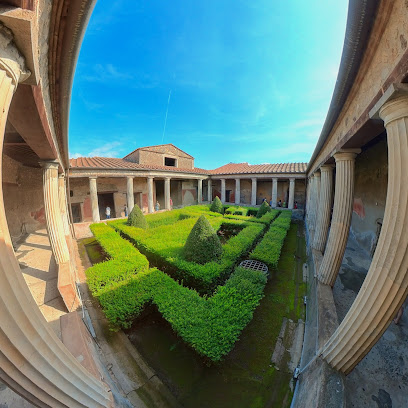
Garden of the Fugitives
Discover the haunting beauty of the Garden of the Fugitives in Pompeii, where history and nature intertwine in a poignant memorial to the past.
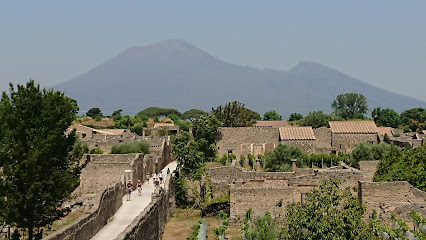
Temple of Venus
Explore the Temple of Venus in Pompeii, a stunning ancient monument dedicated to the goddess of love, reflecting the rich history and artistry of Roman civilization.
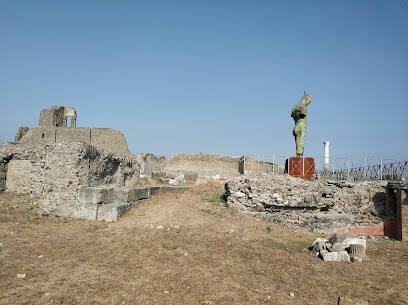
Porta Vesuvio
Explore Porta Vesuvio, the iconic entrance to Pompeii, where ancient history and the echoes of a lost civilization await your discovery.
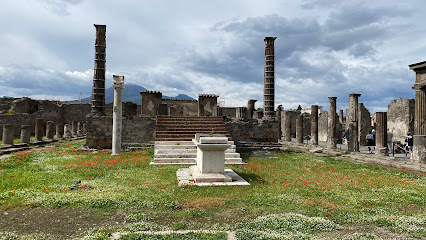
Porta Capua
Discover Porta Capua, a majestic Roman gateway in Pompei, Italy, blending history, culture, and stunning architecture for an unforgettable experience.
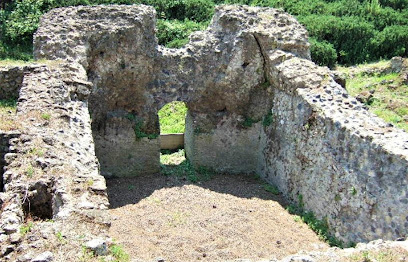
Essential places to dine
La Bettola Del Gusto
Experience exquisite seafood and steak at La Bettola Del Gusto in Pompei – a culinary delight steeped in Italian tradition.
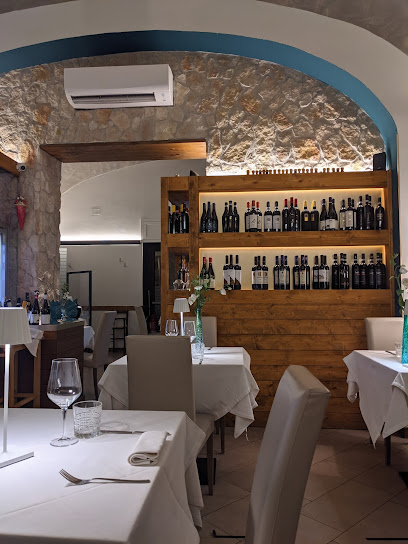
Mercato Pompeiano Restaurant
Discover authentic Italian flavors at Mercato Pompeiano Restaurant in Pompei – where tradition meets taste in a warm ambiance.
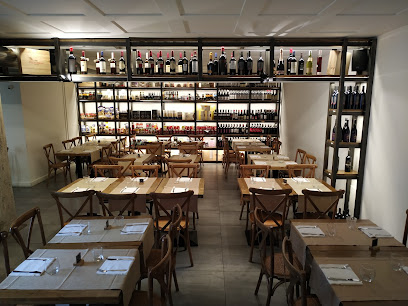
Stuzzico By Lucius
Experience authentic Italian flavors at Stuzzico By Lucius in Pompeii – where delicious food meets rich cultural heritage.
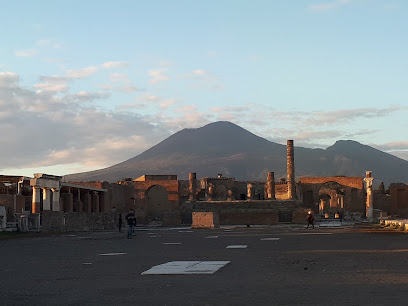
Add'ù Mimì
Experience authentic Italian seafood cuisine at Add'ù Mimì in Pompei - where tradition meets flavor.
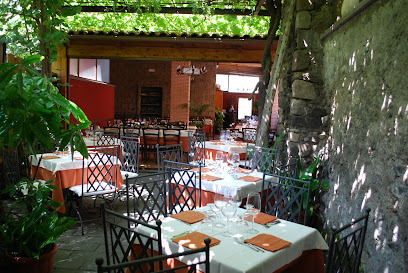
Casa Gallo Ristorante
Experience authentic Southern Italian cuisine at Casa Gallo Ristorante in Pompei—where every dish tells a story of tradition and flavor.
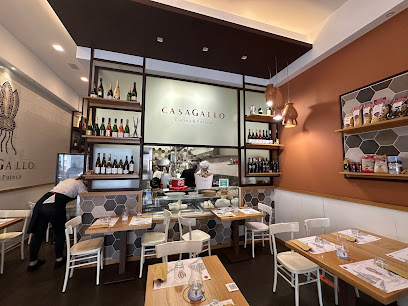
La Vinicola
Experience authentic Italian and seafood cuisine at La Vinicola in Pompei – where tradition meets taste.
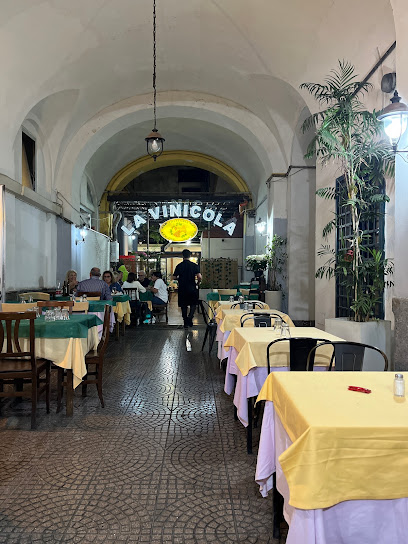
Ristorante Il Principe
Experience the flavors of Italy at Ristorante Il Principe in Pompei - where culinary excellence meets elegant dining.
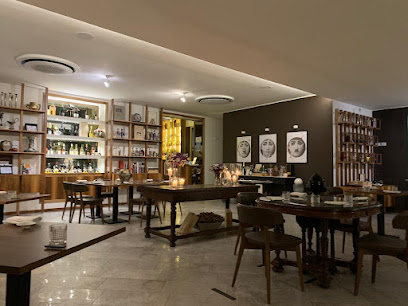
Il Posticino
Experience authentic Italian dining at Il Posticino in Pompei, specializing in fresh seafood and local flavors.
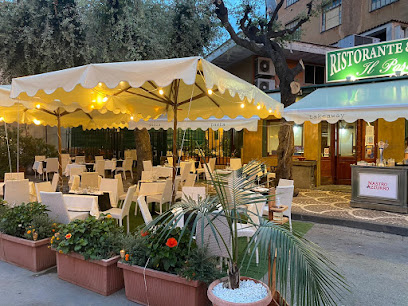
Ristorante Anfiteatro
Experience authentic Italian cuisine at Ristorante Anfiteatro in Pompei - where tradition meets flavor in a family-friendly setting.
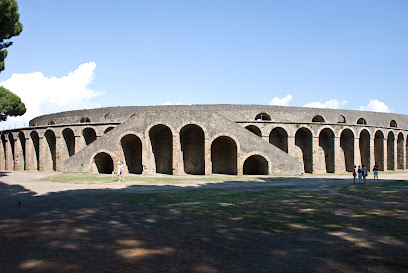
Ristorante President Pompei
Discover Ristorante President in Pompei: A fine dining experience offering exquisite Italian and Mediterranean cuisine amidst historical wonders.
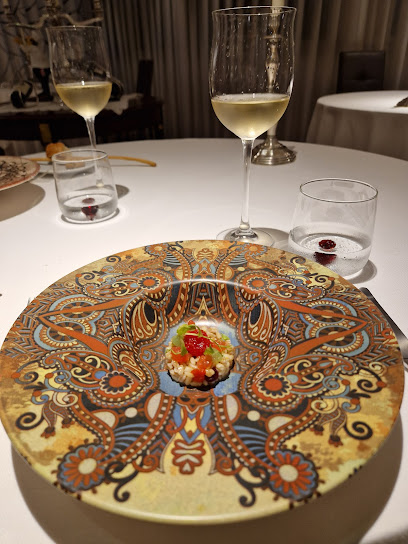
Markets, malls and hidden boutiques
Pipol
Explore Pipol Boutique in Pompei for a stylish shopping experience with curated fashion and accessories that reflect modern Italian elegance.

Tufano Moda - Pompei
Explore Tufano Moda in Pompei for a chic selection of stylish clothing and accessories that celebrate contemporary Italian fashion.
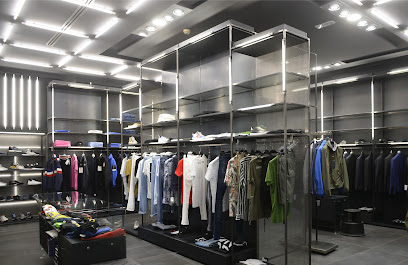
GIORDANO BOUTIQUE
Discover Giordano Boutique in Pompei for a unique blend of Italian fashion and contemporary style, perfect for every traveler.
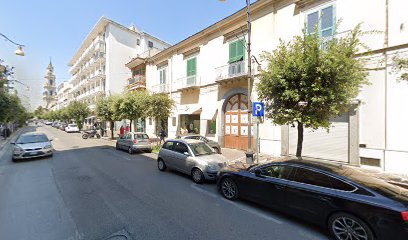
Boutique Rosalba Abbigliamento - Lacoste, Wrangler, Levi's
Discover stylish clothing at Boutique Rosalba in Pompei, featuring top brands like Lacoste, Wrangler, and Levi's for a fashionable Italian experience.
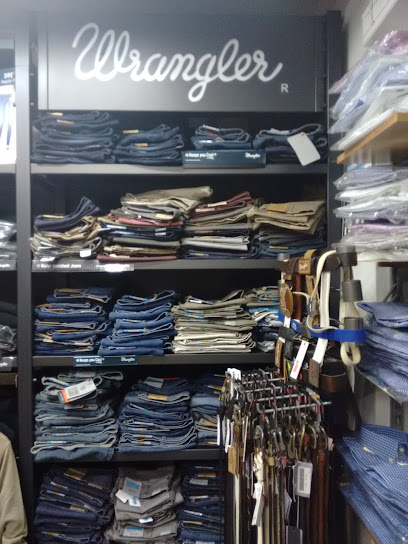
Boutique Demil Di Emilia Di Paolo
Explore unique Italian fashion at Boutique Demil Di Emilia Di Paolo, a hidden gem in the heart of Pompei offering a curated selection of stylish clothing.
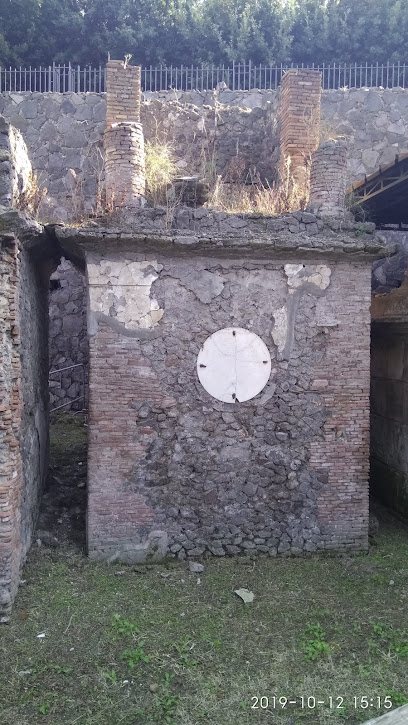
Cellini Gallery Cameos & Corals
Discover exquisite cameos and corals at Cellini Gallery in Pompei, where tradition meets craftsmanship in stunning jewelry pieces.
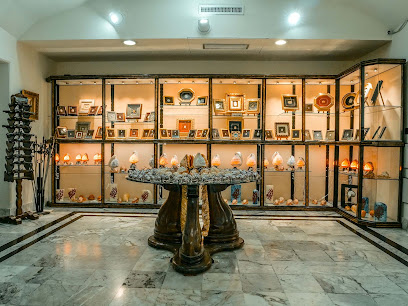
Ginseria
Discover unique vintage fashion treasures at Ginseria in Pompei, where timeless style meets nostalgia in a charming shopping experience.
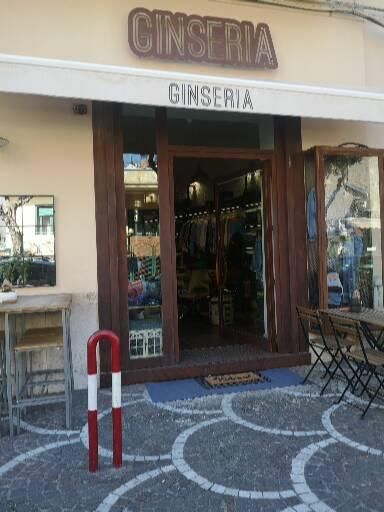
See Pompeii
Discover unique souvenirs that capture the essence of Pompeii at See Pompeii, the perfect stop for every traveler seeking authentic mementos.
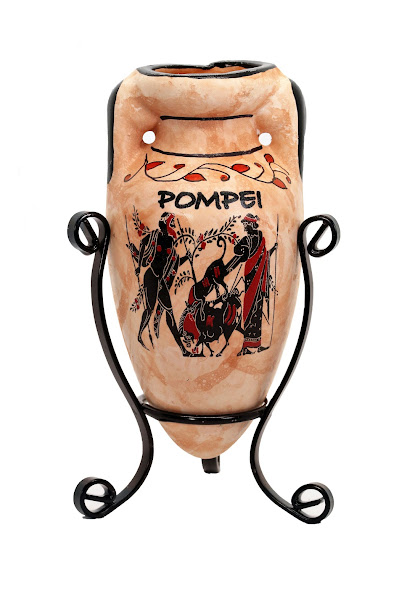
Aurum S.n.c.
Explore Aurum S.n.c. in Pompei for exquisite handcrafted fashion accessories that embody Italian craftsmanship and culture.
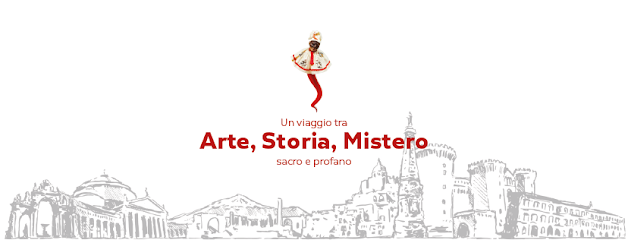
roberta falco shop
Explore Roberta Falco Shop in Pompei for unique clothing and a taste of local fashion culture.

Essential bars & hidden hideouts
Open Bar Pompei
Discover the perfect blend of local cuisine and vibrant atmosphere at Open Bar Pompei, a must-visit for travelers exploring the ancient ruins.
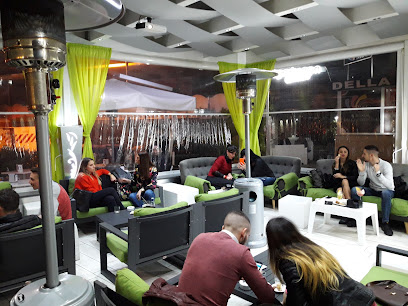
'Mericano (Pub - Steak House - Birreria) Pompei
Discover Mericano in Pompei, where hearty steaks meet a vibrant pub atmosphere, perfect for locals and tourists alike.
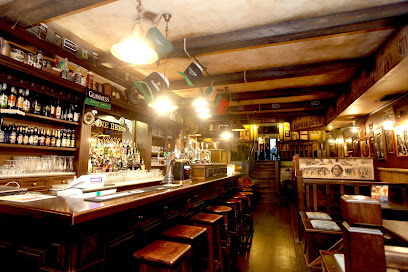
Pub27
Unwind at Pub27, a vibrant pub in Pompei offering delicious food, refreshing drinks, and a welcoming atmosphere perfect for tourists and locals.
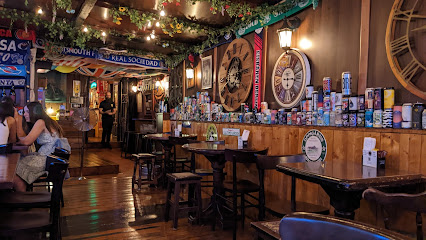
THE ROOF
Discover THE ROOF: A premier cocktail bar and lounge in Pompei offering breathtaking views, exquisite drinks, and a culinary adventure.
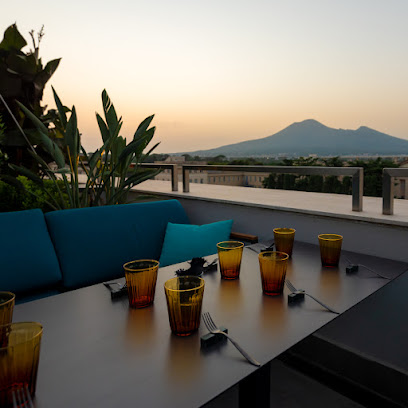
Delirum
Experience the vibrant cocktail culture at Delirum in Pompei, where every drink is a masterpiece served in a lively atmosphere.
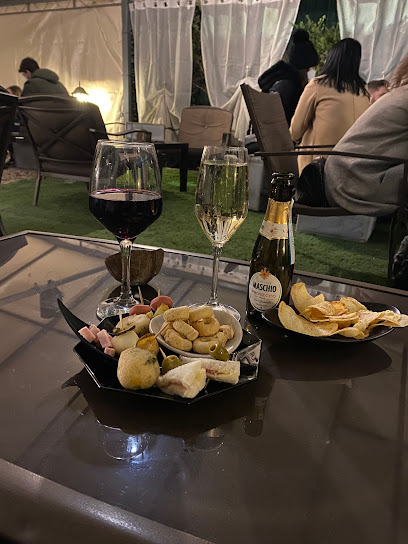
The Dream 64
Discover The Dream 64 in Pompei, where gourmet hamburgers meet a vibrant pub atmosphere for an unforgettable dining experience.
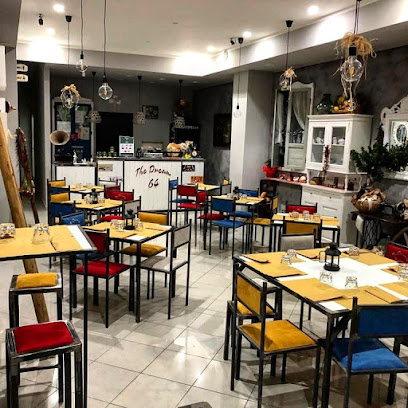
Bar Sport
Experience the essence of Italian hospitality at Bar Sport, a lively bar in the heart of Pompei, perfect for coffee and socializing.
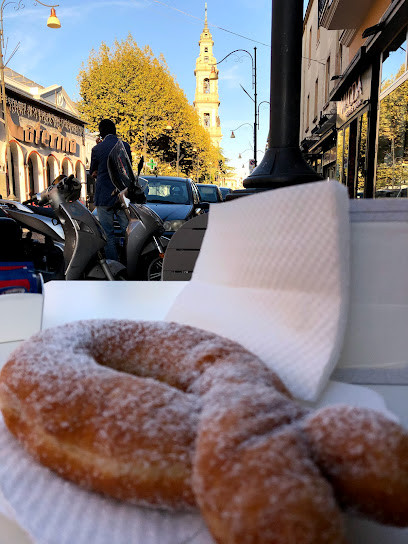
CAFFETTERIA STONE AGE
Discover the authentic flavors of Italy at Caffetteria Stone Age in Pompei, where tradition meets warm hospitality in every sip and bite.

Methe Pompei
Experience the vibrant atmosphere of Methe Pompei, a perfect bar for relaxation and local flavors in historic Pompei, Italy.

FOUR BASE
Experience the vibrant atmosphere and local flavors at FOUR BASE, the perfect bar to unwind in historic Pompei.

Local Phrases
-
- HelloCiao
[chow] - GoodbyeArrivederci
[ah-ree-veh-DEHR-chee] - YesSì
[see] - NoNo
[noh] - Please/You're welcomePer favore/Prego
[pehr fah-VOH-reh/PRAY-goh] - Thank youGrazie
[GRAH-tsyeh] - Excuse me/SorryScusi/Mi dispiace
[SKOO-zee/mee dee-spyah-cheh] - How are you?Come stai?
[KOH-meh stai] - Fine. And you?Bene. E tu?
[BEH-neh. eh too] - Do you speak English?Parli inglese?
[PAHR-lee een-GLAY-zeh] - I don't understandNon capisco
[non kah-PEES-koh]
- HelloCiao
-
- I'd like to see the menu, pleaseVorrei vedere il menù, per favore
[voh-RAY veh-DEH-reh eel meh-NOO, pehr fah-VOH-reh] - I don't eat meatNon mangio carne
[non MAN-joh KAR-neh] - Cheers!Salute!
[sah-LOO-teh] - I would like to pay, pleaseVorrei pagare, per favore
[voh-RAY pah-GAH-reh, pehr fah-VOH-reh]
- I'd like to see the menu, pleaseVorrei vedere il menù, per favore
-
- Help!Aiuto!
[ah-YOO-toh] - Go away!Vai via!
[vai VEE-ah] - Call the Police!Chiamate la polizia!
[KYAH-mah-teh lah poh-LEE-tsya] - Call a doctor!Chiamate un medico!
[KYAH-mah-teh oon meh-DEE-koh] - I'm lostMi sono perso
[mee SOH-noh PEHR-soh] - I'm illMi sento male
[mee SEHN-toh MAH-leh]
- Help!Aiuto!
-
- I'd like to buy...Vorrei comprare...
[voh-RAY kohm-PRAR-eh] - I'm just lookingSto solo guardando
[stoh SOH-loh gwar-DAHN-doh] - How much is it?Quanto costa?
[KWAHN-toh KOH-stah] - That's too expensiveÈ troppo caro
[eh TROH-poh KAH-roh] - Can you lower the price?Può abbassare il prezzo?
[pwah ab-bah-SAH-reh eel PREHT-soh]
- I'd like to buy...Vorrei comprare...
-
- What time is it?Che ora è?
[keh OH-rah eh] - It's one o'clockÈ l'una
[eh LOO-nah] - Half past (10)Mezza (dieci e mezza)
[MEHT-tsah (DYEH-chee eh MEHT-tsah)] - MorningMattina
[mah-TEEN-ah] - AfternoonPomeriggio
[poh-meh-REE-joh] - EveningSera
[SEH-rah] - YesterdayIeri
[YEH-ree] - TodayOggi
[OH-jee] - TomorrowDomani
[doh-MAH-nee] - 1Uno
[OO-noh] - 2Due
[DWEH] - 3Tre
[TREH] - 4Quattro
[KWAT-troh] - 5Cinque
[CHEEN-kweh] - 6Sei
[SAY] - 7Sette
[SEH-tteh] - 8Otto
[OH-ttoh] - 9Nove
[NOH-veh] - 10Dieci
[DYEH-chee]
- What time is it?Che ora è?
-
- Where's a/the...?Dov'è un/il...?
[doh-VEH oon/eel] - What's the address?Qual è l'indirizzo?
[kwal eh leen-DEE-reet-soh] - Can you show me (on the map)?Può mostrarmi (sulla mappa)?
[pwah mohs-TRAHR-mee (SOOL-lah MAHP-pah)] - When's the next (bus)?Quando passa il prossimo (autobus)?
[KWAHN-doh PAH-ssah eel PROSS-see-moh (OW-toh-boos)] - A ticket (to ....)Un biglietto (per ....)
[oon beel-YET-toh (pehr)]
- Where's a/the...?Dov'è un/il...?
History of Amphitheatre of Pompeii
-
The Amphitheatre of Pompeii, built around 80 BCE, is the oldest surviving Roman amphitheatre. It was constructed using local limestone and tuff, showcasing the architectural ingenuity of the time. The design reflects the Roman passion for entertainment, with a capacity to hold approximately 20,000 spectators, facilitating various events such as gladiatorial contests and venationes.
-
During its operational years, the amphitheatre served as a hub for social and cultural gatherings. It hosted not only gladiatorial games but also other public spectacles that reinforced social hierarchies and communal identities among the citizens of Pompeii. The amphitheatre was a place where the Roman ideals of valor and strength were glorified.
-
In 62 CE, Pompeii experienced a significant earthquake that caused extensive damage to many structures, including the amphitheatre. This event led to repairs and renovations, which highlighted the resilience of the community and their dedication to maintaining this central cultural venue.
-
The catastrophic eruption of Mount Vesuvius in 79 CE buried Pompeii under volcanic ash and pumice, effectively preserving the amphitheatre and the city in a time capsule. The sudden disaster halted all activities, including those at the amphitheatre, marking the end of an era for the people of Pompeii. Archaeological excavations later revealed not only the structure itself but also remnants of the events that took place within.
-
The amphitheatre was rediscovered in the 18th century during the excavations of Pompeii, becoming an important site for understanding Roman architecture and entertainment. Its layout and construction techniques provide insight into the cultural and social dynamics of ancient Pompeii. Today, it stands as a symbol of the rich history of the region and attracts thousands of visitors each year.
Amphitheatre of Pompeii Essentials
-
The Amphitheatre of Pompeii is located near the main entrance to the archaeological site. If you're coming from the city center, you can easily walk to the site in about 15 minutes. For those arriving by train, the Pompeii Scavi - Villa dei Misteri station is the closest, approximately a 10-minute walk to the amphitheater. If you're coming from other neighborhoods, local buses frequently connect key areas in Pompeii, including the train station and the Piazza Esedra.
-
The Amphitheatre of Pompeii is best explored on foot due to the pedestrian-friendly layout of the archaeological site. Inside the site, you can find well-marked paths leading to various attractions, including the amphitheater itself. Bicycles are not allowed within the site, but you can rent one to explore the surrounding area of Pompeii. Local buses also operate in the region, connecting you to nearby attractions.
-
Pompeii is generally safe for tourists, but it's wise to remain vigilant, especially in crowded areas. Petty crime, such as pickpocketing, can occur, particularly near popular tourist spots. Areas around the train station can be less secure at night, so take caution when traveling in those regions after dark. Always keep your belongings secure and be aware of your surroundings.
-
In case of an emergency, dial 112 for police, fire, or medical services in Italy. There are several pharmacies in Pompeii for minor health issues, and the nearest hospitals are located in nearby towns. It’s advisable to have travel insurance that covers emergencies. Also, familiarize yourself with the emergency exit routes within the archaeological site.
-
Fashion: Do wear comfortable walking shoes as the ruins have uneven surfaces. Don't wear revealing clothing, especially when visiting any religious sites nearby. Religion: Do respect local customs, particularly if you visit any churches in the area. Public Transport: Do be polite and give your seat to elderly passengers; don't engage in loud conversations. Greetings: Do greet locals with a friendly smile or a simple 'buongiorno.' Eating & Drinking: Do try local specialties from nearby eateries; don't bring outside food or drink into the archaeological site.
-
To experience the Amphitheatre of Pompeii like a local, consider visiting early in the morning to avoid crowds. Engage with the site’s guides for in-depth historical insights. After touring the amphitheater, explore the nearby local markets for authentic Italian snacks and souvenirs. Don't miss out on the smaller, less crowded areas of the archaeological site, where you can find unique ruins and artifacts.
Trending Landmarks in Amphitheatre of Pompeii
Nearby Cities to Amphitheatre of Pompeii
-
Things To Do in Positano
-
Things To Do in Herculaneum
-
Things To Do in Ravello
-
Things To Do in Amalfi
-
Things To Do in Sorrento
-
Things To Do in Naples
-
Things To Do in Capri
-
Things To Do in Matera
-
Things To Do in Bari
-
Things To Do in Rome
-
Things To Do in St. Peter's Square
-
Things To Do in Apostolic Palace
-
Things To Do in Vatican Necropolis
-
Things To Do in St. Peter's Basilica
-
Things To Do in Sistine Chapel

